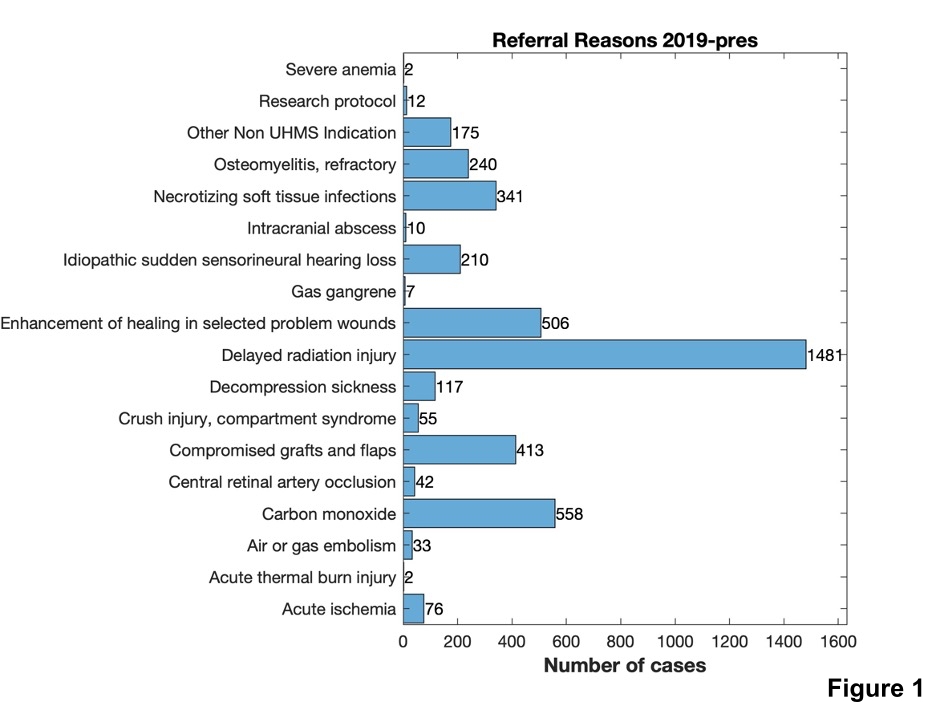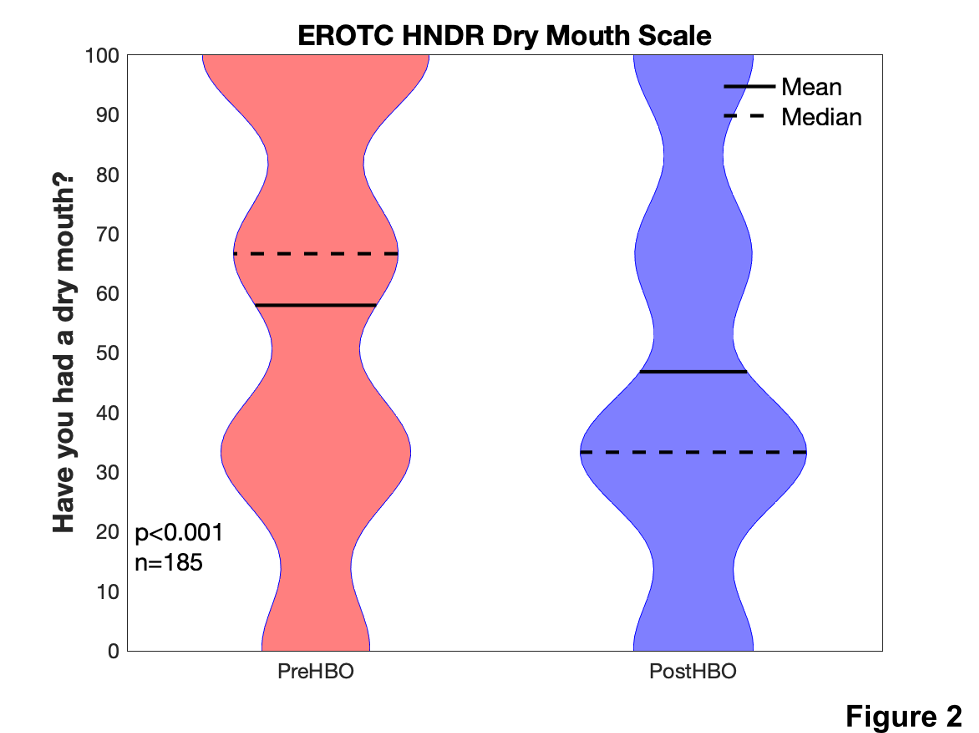
From the 2023 3rd Quarter Pressure

Multicenter Hyperbaric Outcomes Registry: 2023 Q3 Update
The Multicenter Hyperbaric Outcomes Registry collects a defined set of outcome measures for all 14 UHMS-approved, and for some emerging hyperbaric oxygen treatment indications. The registry is a consortium of participating treatment centers. All participating sites use the same Research Electronic Data Capture (REDCap) template, which defines the data elements collected for every patient.
Participants complete a general symptom survey and disease-specific symptom questionnaire immediately pre- and post- treatment. Additional follow-up questionnaires are sent to patients at three months, and at one, three and five years after treatment completion to help assess long-term outcomes.
As of June, 2023 there were 27 participating centers, and approximately 5800 patient entries in the registry. That number continues to grow. Overall case mix from 2019 to present is shown below (Figure 1). Radiation injury continues to be the leading indication for treatment.

A relatively small number of more severe adverse events were reported, including seizures and pulmonary edema during treatment. The registry data includes treatment conditions under which those events occurred. For example, in 2022:
- Seven seizures were reported for patients starting in 2022: one occurred at 2.0 ATA, one at 2.4 ATA, three at 2.8 and two at 3.0 ATA.
- Approximately 7% of patients experienced claustrophobia. About half of those stopped treatment, but others were able to be managed with minimal or no treatment disruption.
- Otic barotrauma was reported in 5% of patients. About 8% of patients had placement of one or bilateral myringotomy tubes to manage ear pain
The disease specific symptom surveys allow us to view the magnitude of positive outcomes as well. For instance, dry mouth symptoms in Head and Neck patients are shown below:

The registry allows us to examine standardized outcome measures across centers which may treat small numbers of patients individually, but combined hopefully will help direct and support future treatment practices.



















